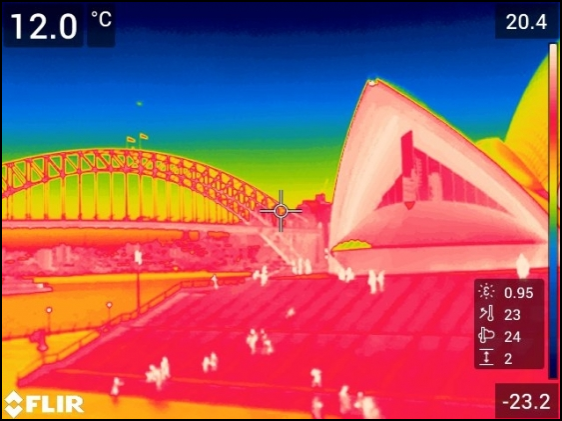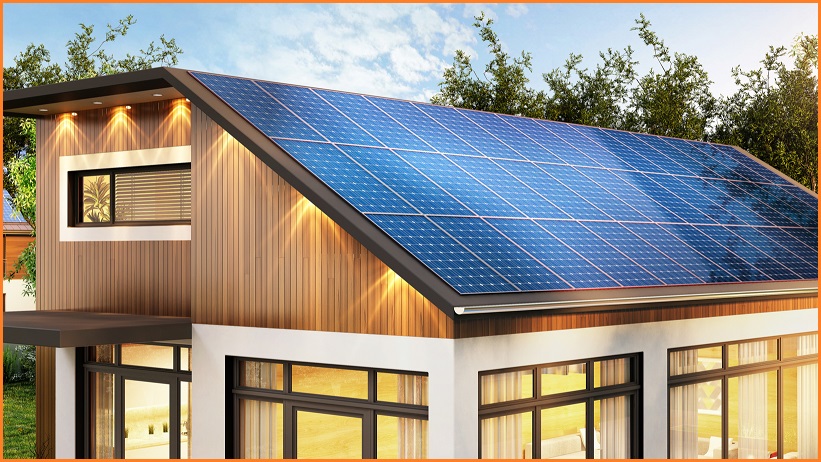Conventional wisdom is that solar power only works during the daytime, but a team of Australian researchers has found a way to generate electricity from solar power at night-time.
Unlike the electricity generated by rooftop photovoltaic (PV) solar panels – which have become so popular that Australia is already a world leader in generating power from the daytime sun – the power in question doesn’t come directly from the sun’s rays.
PV cells don’t work at night – a point that has made solar power a scapegoat for Coalition politicians like Minister for Resources and Water Keith Pitt, who recently argued the “fundamental fact” that solar doesn’t work at night.
Pitt challenged renewable-energy advocates to “find me a solar panel that works in the dark” – and, seemingly answering the call, researchers from the University of New South Wales (UNSW) School of Photovoltaic and Renewable Energy Engineering (SPREE) have now published the results of research into thermo-radiative photodiodes that do just that.
While exposed to the sun during the day, earth’s surface absorbs energy that heats up its surface.
As the sun sets at night, that heat is released into the cooler night air as ‘mid-infrared’ radiation – an invisible form of energy that can be converted to electricity by the photodiodes, which are used in night-vision goggles and the thermal cameras popularised in films like Predator.
“In the same way that a solar cell can generate electricity by absorbing sunlight emitted from a very hot sun,” said team member Dr Phoebe Pearce as the discovery was announced, “the thermo-radiative diode generates electricity by emitting infrared light into a colder environment. In both cases, the temperature difference is what lets us generate electricity.”

A thermal imaging camera highlights the amount of heat radiating from Sydney Harbour and its surroundings back into the atmosphere at night. Image: supplied.
The UNSW team tested how well HgCdTe photodiodes – made from mercury, cadmium and tellurium – can capture infrared heat radiation at night, and the results were promising.
Where the ground temperature is 12.5 degrees Celcius warmer than the air above it – a common temperature fluctuation in Australia and elsewhere – the team found that a single 0.01 square millimetre HgCdTe photodiode can capture 2.26 milliwatts of energy per square metre.
“We have made an unambiguous demonstration of electrical power from a thermo-radiative diode,” said team leader Associate Professor Ned Ekins-Daukes.
“Using thermal imaging cameras, you can see how much radiation there is at night,” he explained, but “what we have done is make a device that can generate electrical power from the emission of infrared thermal radiation.
“Whenever there is a flow of energy, we can convert it between different forms.”
That means the method can also generate electricity from the heat energy released from other sources – such as waste heat from manufacturing facilities or decomposing organic matter in landfills – and could theoretically produce devices that generate their own power from the body heat of the person wearing them.
A new take on solar energy
The technology is still at its early stages, and it will be some time before you can install night-time solar panels on your house.
Rooftop solar panels typically pack 60 or 72 standard-sized PV cells measuring 15.6cm by 15.6cm each, producing up to 330 watts of power each – with a power density of around 200 watts per square metre.
By contrast, in their current form, the thermo-radiative diodes generate just 0.00113 per cent as much power.
This leaves considerable room for improvement in areas like efficiency – the diodes are only 1.8 per cent efficient, well behind typical PV solar panel efficiency of around 20 per cent – and the use of diodes made of different materials.
“While there are promising theoretical [predictions] for its application in night-sky power generation and waste heat recovery, the current technological limits have not been explored,” the team’s paper notes.
“Our results highlight the need for achieving high radiative efficiencies with mid-infrared semiconductors to deliver on the promise of thermo-radiative power generation.”
The research is a coup for the UNSW program, which is using Australian Renewable Energy Agency (ARENA) R&D funding to research ways to improve the performance, adoption, and reusability of solar power.
Solar energy has been a contentious point in the current election campaign, with the Greens advocating for subsidies to help households adopt solar batteries and Labor pitching a broad plan that will boost renewable energy usage – even as the Coalition government tries but fails to redirect ARENA funding to fossil fuel-related technologies.
Thinking big about solar has proved transformative for Big Tech firms like Amazon, which has adopted solar to run its cloud data centres and this month announced that solar farms at Gunnedah and Suntop, NSW are now operational.
Those sites will produce a planned 392,000 MWh of solar power annually, increasing to 717,000 MWh – enough to power 115,000 Australian homes – once a third site, a wind farm at Hawkesdale, comes online.
Even as PV solar investments continue, the UNSW team will be working to figure out how thermo-radiative diodes could keep those solar panels working through the night.
“By leveraging our knowledge of how to design and optimise solar cells and borrowing materials from the existing mid-infrared photodetector community,” said co-author Dr Michael Nielsen, “we hope for rapid progress towards delivering the dream of solar power at night.”










